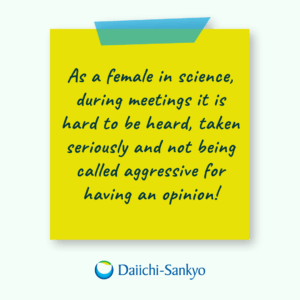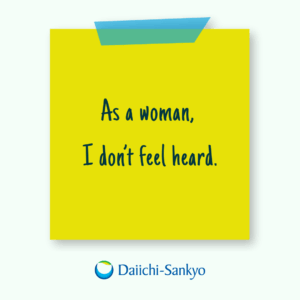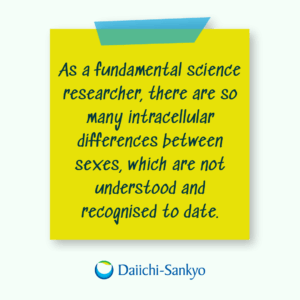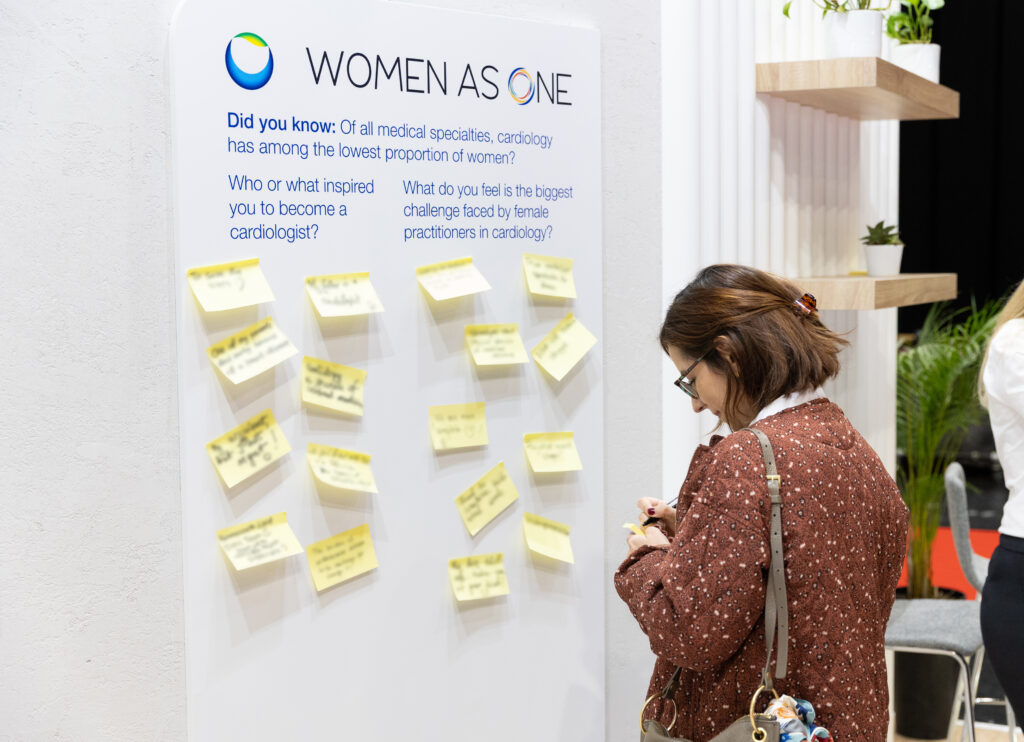Cardiovascular disease (CVD) is recognised as one of the leading causes of death worldwide. Despite medical advances and innovations of the past decades in CVD, one population remains underrecognised, underdiagnosed and undertreated: Women.1
Gender bias and treatment gaps: Cardiovascular disease in women remains underdiagnosed and undertreated
“It’s not exactly news that cardiovascular disease is the leading cause of death among women globally. Women’s symptoms, risks, and voices continue to be overlooked.1 At Daiichi Sankyo Europe, we believe that closing this gap begins with listening – especially to the women shaping the future of cardiology.” Gillian D’Souza, Senior Manager Public Relations, Daiichi Sankyo Europe.
While cardiovascular disease affects both genders, CVD is responsible for 1 in every 3 deaths of women worldwide and thus the leading cause of death in women.2 Several factors play into this – one being underdiagnosis and delayed care.3 Women often experience atypical CVD symptoms (such as extreme fatigue, nausea, jaw pain2) compared to men, which can lead to missed diagnoses and therefore delay critically necessary treatments.2
Another contributing factor: prevailing treatment biases. Studies show that female patients are less likely to be referred to cardiac rehabilitation and receive fewer revascularisation procedures (such as stents, bypass surgery) for acute coronary incidents.3 Women with cardiovascular disease also receive less intensive pharmacotherapy for prevention and underlying disease management, such as treatment of high blood pressure.3
This gap in awareness and care for cardiovascular disease in women puts millions of women worldwide at potential risk of complications – and highlights the urgent need to centre women’s heart health in medical conversations.
A bias that goes deeper: Cardiovascular disease, women and their underrepresentation in care
When it comes to cardiovascular disease and women, the imbalance extends beyond patient care into the healthcare workforce itself. Women make up only 20% of cardiologists and less than 10% of leadership positions in the field are staffed with women experts.4
This means women are underrepresented in cardio care. In real-world settings, this contributes to diagnostic delays and disparities in treatment, as symptoms unique to women are more frequently underconsidered by male physicians – leading to women with cardiovascular disease not receiving the care that reflects their needs and risk profiles.5
Even further, women are not only underrepresented as healthcare providers and leaders in cardiology, they also face systemic inequities, creating barriers to career success, job satisfaction and care they can provide to their patients.6
Partnering for progress: Daiichi Sankyo Europe and Women as One for gender equity in cardiovascular disease in women
At Daiichi Sankyo Europe, we believe that strategic partnerships have the potential to drive real change and tangible impact. As an official partner of Women as One, we aim to spotlight women in cardiology: Raising awareness of gender differences in treatment and representation in clinical trials – to make a difference for women with cardiovascular disease.
Supporting women’s cardiovascular health means addressing both clinical and structural inequalities – starting with awareness, education, and inclusion, and we recognise that we must invest in the holistic care of women’s hearts. We can’t afford not to.
Our “Investing in women’s hearts” initiative, therefore brings together research, advocacy, and education to raise awareness and drive meaningful change across the healthcare ecosystem for women.
As cardiology continues to evolve, elevating the role of women is not only the right thing to do, but is essential to improving healthcare outcomes for all. Through inclusive leadership, and collaborative action, Women As One and Daiichi Sankyo Europe are laying the foundation for a more equitable future in cardiology.7
“This collaboration demonstrates what is possible when industry leaders align with purpose-driven organisations. Together, we will broaden the reach and influence of women in cardiology,” Dr. Roxana Mehran, Founder, Women As One.7
Bringing together women in cardiology and other experts in gender-informed cardiologic care, we invited them to share their stories, their perspectives on a storytelling wall. These “Stories from the Wall” are real-life accounts that shed light on the real impact of delayed diagnoses, overlooked symptoms, and unequal treatment – helping to spark conversations, deeper understanding and empathy among healthcare providers, policymakers, and the broader public.
Cardiovascular disease in Women – real stories from cardiology experts
Behind every statistic is a real person – patients and healthcare professionals alike. Systemic hurdles and sexism were deeply felt and recounted by the participating experts:




Studies support these personal stories and show that structural barriers can include lower compensation and promotion rates, limited opportunities for mentorship and leadership positions, as well as workplace cultural challenges, such as as gender-based discrimination and obstacles in balancing professional and personal caregiving roles.6

Analyses suggest that women are also critically underrepresented in cardiovascular clinical trials – both as participants and principal investigators.8
Both forms of underrepresentation in clinical trials can lead to critical evidence gaps, impacting the health outcomes of women when treated with the same paradigms tested predominantly on men.1
Change begins with visibility: Why elevating women in cardiovascular disease matters
Amid all challenges, we could also see how representation and visibility matters. One expert shared how his mother, who is a researcher in the biology of aging, inspired him to become a cardiologist.
Joining his mother for several cardiology conferences as a child, exposed him to the world of cardiovascular disease and the impact that women can have in this area.
Visualising and speaking up about an issue is one important step on the way to change a broader issue systemically. Shedding such a light on these longstanding barriers, we share this vision with our partners from Women as One: To meaningfully and sustainably increase the visibility, influence, and leadership of women in cardiology.
Through intentional investment, inclusive leadership, and collective action, we are laying the groundwork for a more equitable future in cardiology.
Learn more about our joint initiative for cardiovascular disease in women here.

Change starts with visibility. At Daiichi Sankyo Europe, we believe that elevating the voices of women in cardiology is essential to building a more inclusive and effective healthcare system. By listening to the experiences of women in cardiology and supporting their advancements, we move closer to a future where care is truly equitable for all.


